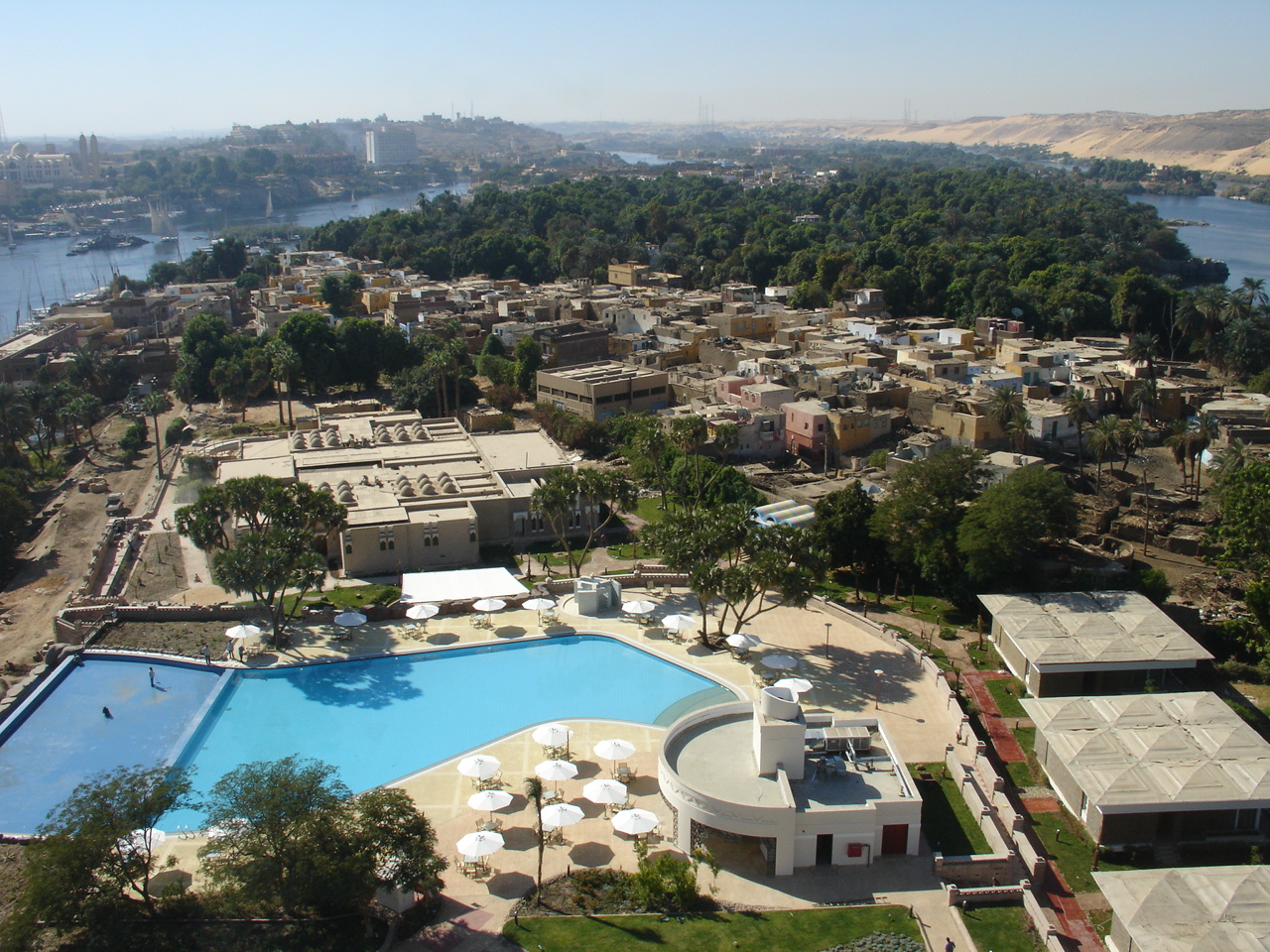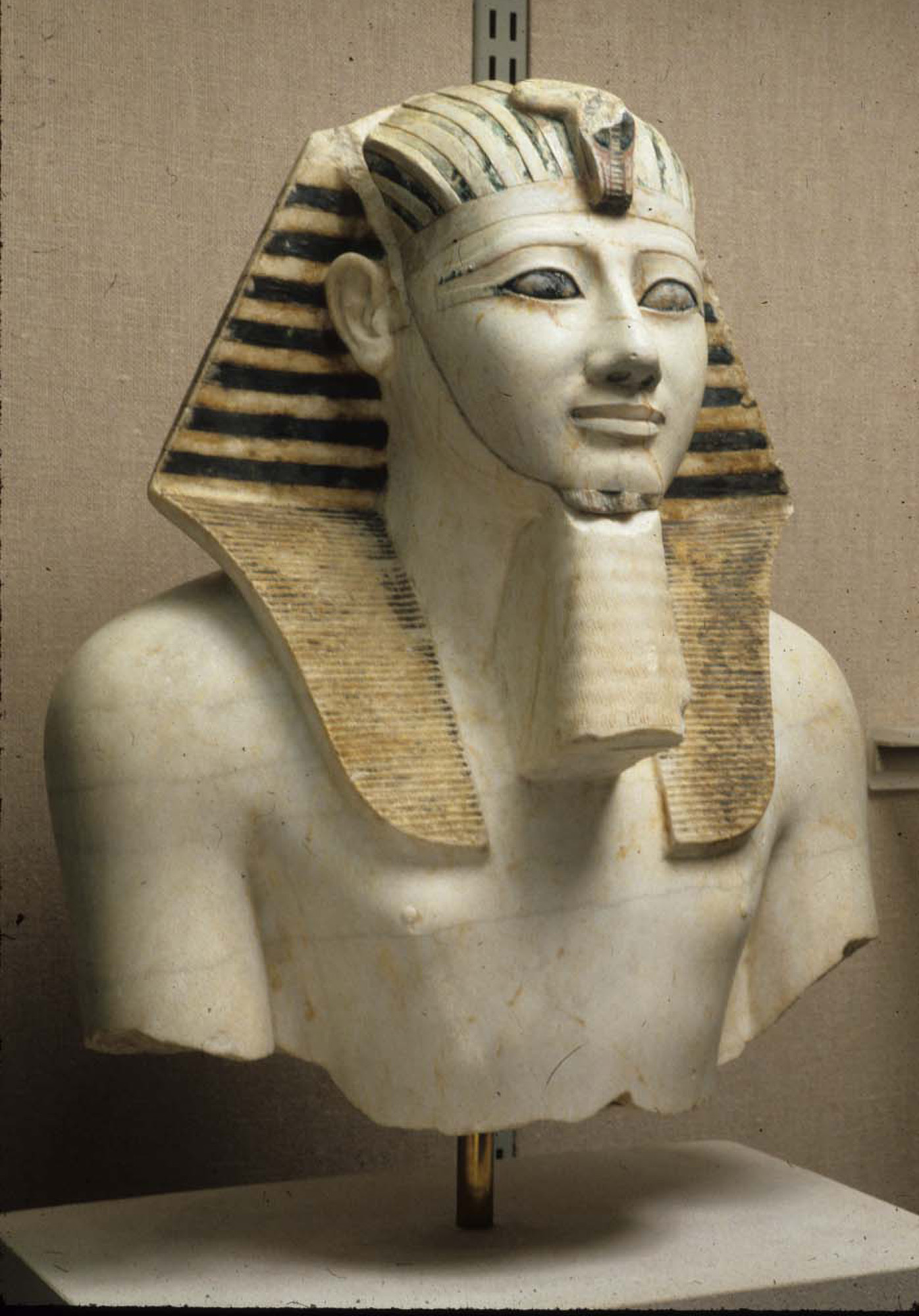|
Amenemhet I
:''See Amenemhat (other), Amenemhat, for other individuals with this name.'' Amenemhat I (Egyptian language, Ancient Egyptian: ''Ỉmn-m-hꜣt'' meaning 'Amun is at the forefront'), also known as Amenemhet I, was a pharaoh of ancient Egypt and the first king of the Twelfth Dynasty of Egypt, Twelfth Dynasty of the Middle Kingdom of Egypt, Middle Kingdom. Amenemhat I was probably the same as the vizier named Amenemhat who led an expedition to Wadi Hammamat under his predecessor Mentuhotep IV, and possibly overthrew him from power. Scholars differ as to whether Mentuhotep IV was killed by Amenemhat I, but there is no independent evidence to suggest this and there may even have been a period of co-regency between their reigns.E. Hornung, ''History of Ancient Egypt'', 1999 p.50 Amenemhat I was not of royal lineage, born to Senusret and Nefert who were possibly related to the nomarchial family of Elephantine. The composition of some literary works (the ''Prophecy of Neferti'' ... [...More Info...] [...Related Items...] OR: [Wikipedia] [Google] [Baidu] |
Pyramid Of Amenemhat I
The pyramid of Amenemhat I is an Egyptian burial structure built at Lisht by the founder of the Twelfth Dynasty of Egypt, Amenemhat I. This structure returned to the approximate size and form of Old Kingdom pyramids.Lehner, M. (1997b). The Complete Pyramids. London:Thames and Hudson ltd. It also established a new tradition though of giving each component structure in the pyramid complex its own unique name. The structures together were known as "The places of the appearances of Amenemhat". Construction Archaeological evidence suggests that Amenemhat started to build his pyramid at Thebes but for unknown reasons switched his capital and the location of his pyramid to Lisht (1991–1778 BC). The pyramid upon its completion rose to a height of 55 m, with a base length of 83 m and a slope of 54 degrees. The core of the pyramid was made with small rough blocks of local limestone with a loose fill of sand debris and mud brick. Some of the limestone was stripped from other mo ... [...More Info...] [...Related Items...] OR: [Wikipedia] [Google] [Baidu] |
Amenemhat (other)
Amenemḥat or Amenemhēt , hellenized as Ammenémēs (Eusebius: Ἀμμενέμης) or as Ammanémēs (Africanus: Ἀμμανέμης),Carl Müller, Victor Langlois, Theodor Müller (1848) ''Historicum Graecorum fragmenta'', Volume 2, p. 557, 560 is an Ancient Egyptian name meaning "''Amun is in front''". Amenemhat was the name of a number of kings, princes and administration officials throughout ancient Egyptian history. Kings *Amenemhat I (or Amenemhet I) (reigned c. 1991 BC – c. 1962 BC), the first ruler of the 12th dynasty *Amenemhat II (or Amenemhet II) (reigned c. 1929 BC – c. 1895 BC), the third pharaoh of the 12th dynasty *Amenemhat III (or Amenemhet III) (reigned c. 1860 BC – c. 1814 BC), pharaoh during the 12th dynasty *Amenemhat IV (or Amenemhet IV) (reigned c. 1815 BC – c. 1806 BC), the penultimate pharaoh of the 12th dynasty * Amenemhat Senbef (or Sonbef) (reigned c. 1800 BC – c. 1796 BC), the second king of the 13th dynasty * Sekhemkare Amenemhat (or A ... [...More Info...] [...Related Items...] OR: [Wikipedia] [Google] [Baidu] |
Elephantine
Elephantine ( ; ; arz, جزيرة الفنتين; el, Ἐλεφαντίνη ''Elephantíne''; , ) is an island on the Nile, forming part of the city of Aswan in Upper Egypt. The archaeological sites on the island were inscribed on the UNESCO World Heritage List in 1979 along with other examples of Upper Egyptian architecture, as part of the " Nubian Monuments from Abu Simbel to Philae" (despite Elephantine being neither Nubian, nor between Abu Simbel and Philae). Geography Elephantine is from north to south, and is across at its widest point. The layout of this and other nearby islands in Aswan can be seen from west bank hillsides along the Nile. The island is located just downstream of the First Cataract, at the southern border of Upper Egypt with Lower Nubia. This region above is referred to as Upper Egypt because it is further up the Nile. The island may have received its name after its shape, which in aerial views is similar to that of an elephant tusk, or from the rou ... [...More Info...] [...Related Items...] OR: [Wikipedia] [Google] [Baidu] |
Thutmose III
Thutmose III (variously also spelt Tuthmosis or Thothmes), sometimes called Thutmose the Great, was the sixth pharaoh of the Eighteenth Dynasty. Officially, Thutmose III ruled Egypt for almost 54 years and his reign is usually dated from 28 April 1479 BC to 11 March 1425 BC, from the age of two and until his death at age fifty-six; however, during the first 22 years of his reign, he was coregent with his stepmother and aunt, Hatshepsut, who was named the pharaoh. While he was shown first on surviving monuments, both were assigned the usual royal names and insignia and neither is given any obvious seniority over the other. Thutmose served as the head of Hatshepsut's armies. During the final two years of his reign, he appointed his son and successor, Amenhotep II, as his junior co-regent. His firstborn son and heir to the throne, Amenemhat, predeceased Thutmose III. He would become one of the most powerful pharaohs of the 18th dynasty. Becoming the sole ruling pharaoh of the ... [...More Info...] [...Related Items...] OR: [Wikipedia] [Google] [Baidu] |
Festival Hall Of Thutmose III
The Festival Hall of Thutmose III (''Akh-menu'') is an ancient shrine in Luxor ( Thebes), Egypt. It is located at the heart of the Precinct of Amun-Re, in the Karnak Temple Complex. The edifice is normally translated as "the most glorious of monuments", but "monument to living spirit" is an alternative translation since ''akh'' can mean either ''glory'' or ''blessed/living spirit'' (For instance, Akhenaten is often translated as "living spirit of Aten"). The Festival Hall of Thutmose III is situated at the end of the Middle Kingdom court, with its axis at right-angles to the main east–west axis of the temple. It was originally built to celebrate the jubilee ( Heb-Sed) of the 18th Dynasty pharaoh Thutmose III, and later became used as part of the annual Opet Festival. It is seemingly decorated to echo a huge tent shrine, complete with awnings and tent poles. Located in this temple, the Karnak king list shows Thutmose III with some of the earlier kings that built parts of the ... [...More Info...] [...Related Items...] OR: [Wikipedia] [Google] [Baidu] |
Prenomen (Ancient Egypt)
The prenomen, also called cartouche name or throne name ( egy, 𓆥 nswt-bjtj "of the Sedge and Bee") of ancient Egypt, was one of the five royal names of pharaohs. The first pharaoh to have a Sedge and Bee name was Den during the First Dynasty. Most Egyptologists believe that the prenomen was a regnal name. Others think that it originally represented the birth name of the rulers. The term "of the Sedge and Bee" is written by the hieroglyphs representing a sedge, representing Upper Egypt (𓇓 Gardiner M23) and a bee, representing Lower Egypt (𓆤 L2), each combined with the feminine ending ''t'' (𓏏 X1), read as ''nsw.t'' and ''bj.t'' respectively; the adjectival nisba ending ''-j'' is not represented in writing. During the first three dynasties, the prenomen was depicted either alone or in pair with the Nebty name. Semerkhet was the first pharaoh who devoted his prenomen to the Two Ladies. From Pharaoh Huni, the probable last king of the Third Dynasty onward, the pren ... [...More Info...] [...Related Items...] OR: [Wikipedia] [Google] [Baidu] |
El-Lisht
Lisht or el-Lisht ( ar, اللشت, translit=Al-Lišt) is an Egyptian village located south of Cairo. It is the site of Middle Kingdom royal and elite burials, including two pyramids built by Amenemhat I and Senusret I. The two main pyramids were surrounded by smaller pyramids of members of the royal family, and many mastaba tombs of high officials and their family members. They were constructed throughout the Twelfth and Thirteenth Dynasties. The site is also known for the tomb of Senebtisi, found undisturbed and from which a set of jewelry has been recovered. The pyramid complex of Senusret I is the best preserved from this period. The coffins in the tomb of Sesenebnef present the earliest versions of the Book of the Dead. Overview The ancient Egyptian site of el-Lisht can be found on the west bank of the Nile River, around 65 km south of the city of Cairo. It is a Twelfth Dynasty necropolis, close to the city of Itj-Tawy from which the modern village assumably (given the ... [...More Info...] [...Related Items...] OR: [Wikipedia] [Google] [Baidu] |
Itjtawy
Itjtawy (full Egyptian name ''Amenemhat-itj-tawy'' — "Amenemhat, Seizer of the Two Lands"), is the name of the royal city founded as a new capital by Twelfth Dynasty Egyptian King Amenemhat I, who ruled from approximately 1991 BC to 1962 BC, during year 20 of his reign. As yet, the exact location of the royal city remains unidentified. Itjtawy is known to have been located in the Faiyum region and documentation exists that its cemeteries were located at Lisht, el-Lahun, and Dahshur. Relocation of the capital may have been a strategic move. The site for Itjtawy may have been chosen for its proximity to the source of Asiatic incursions into Egypt, in order to help prevent further attacks. See also * List of ancient Egyptian towns and cities * List of historical capitals of Egypt The current capital of Egypt is Cairo. Over the course of history, however, Egypt's capital has changed. List of Egyptian capitals *Thinis: (3150 BC – 2686 BC) – I and II dynasties * Memphis ... [...More Info...] [...Related Items...] OR: [Wikipedia] [Google] [Baidu] |
Thebes, Egypt
, image = Decorated pillars of the temple at Karnac, Thebes, Egypt. Co Wellcome V0049316.jpg , alt = , caption = Pillars of the Great Hypostyle Hall, in ''The Holy Land, Syria, Idumea, Arabia, Egypt, and Nubia'' , map_type = Egypt , map_alt = , map_size = , relief = yes , coordinates = , location = Luxor, Luxor Governorate, Egypt , region = Upper Egypt , type = Settlement , part_of = , length = , width = , area = , height = , builder = , material = , built = , abandoned = , epochs = , cultures = , dependency_of = , occupants = , event = , excavations = , archaeologists = , condition = , ownership = , management = , public_access = , website = , notes = , designation1 = WHS , designation1_offname = Ancient Th ... [...More Info...] [...Related Items...] OR: [Wikipedia] [Google] [Baidu] |
Ta-Seti
Ta-Seti (''Land of the bow'', also Ta Khentit, ''the Frontier'' or ''Borderland'') was the first nome (administrative division) of Upper Egypt, one of 42 nomoi in Ancient Egypt., Egypt Ancient.net, accessdate=2010-07-14 Egypt tourist authority, accessdate=2010-07-14, Ancient Egyptian religion, Philae.net, accessdate=2010-07-14 Reshafim.org, accessdate=2010-07-14 Aldokan.com, accessdate=2010-07-14 Digital Egypt for Universities, access ... [...More Info...] [...Related Items...] OR: [Wikipedia] [Google] [Baidu] |
_-_TIMEA.jpg)





_1up.jpg)